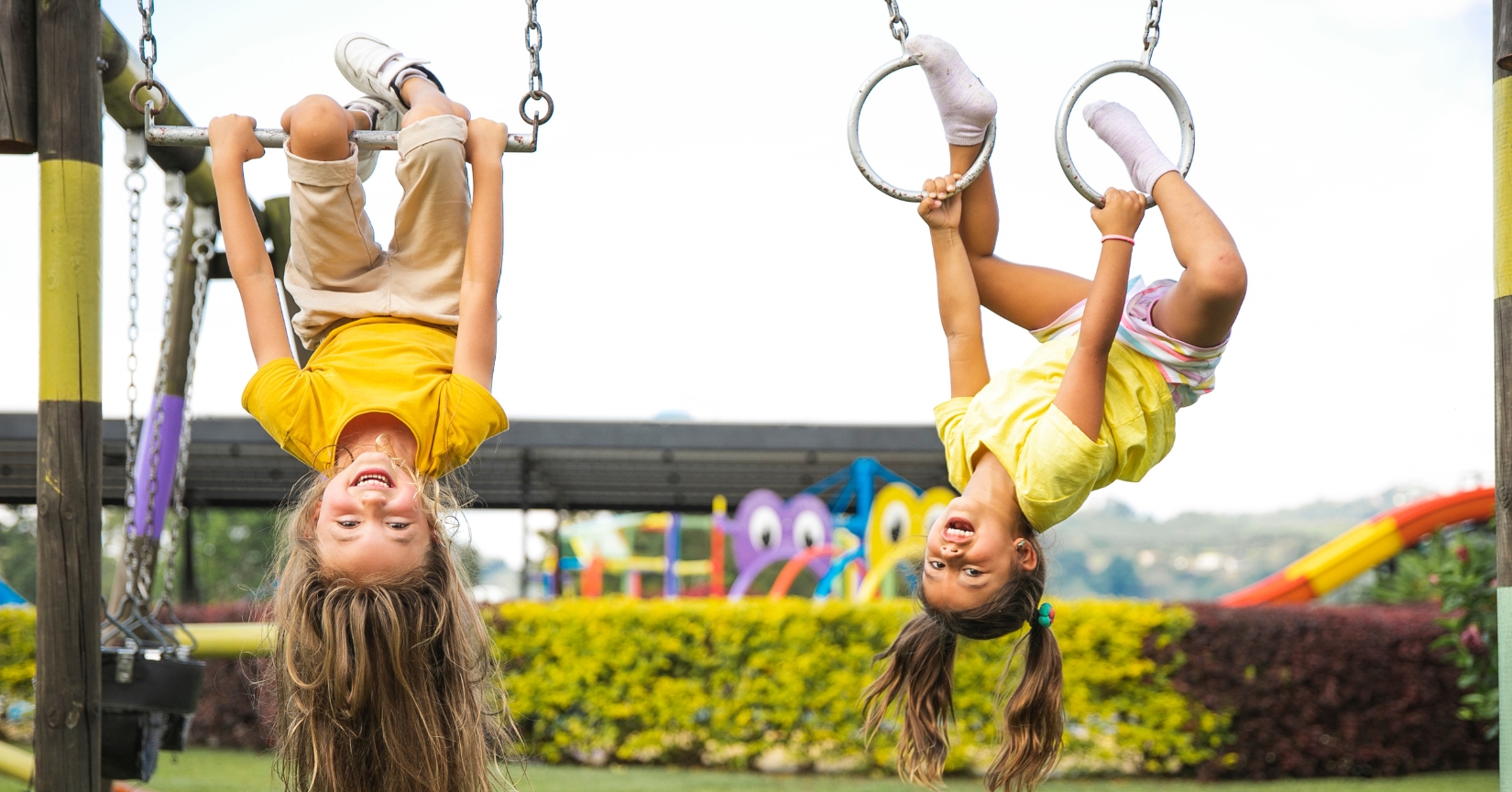Playgrounds are a child’s paradise, full of laughter, games, and pure joy. But these fun-filled spaces can also be the stage for unexpected accidents.
As an experienced parent, I’ve seen my fair share of playground accidents. Trust me when I say that a few precautionary measures can make a world of difference.
In this article, we’ll delve into the 7 most common playground injuries that can happen when children are at play. More importantly, we’ll provide practical tips on how you can prevent these injuries from occurring during your child’s playtime.
After all, playgrounds should be all about fun, exploration and making memories, not trips to the emergency room. Let’s jump right into it and ensure your child’s playtime remains safe and enjoyable!
1. Falls and fractures
Playgrounds are often a whirlwind of activity, with children running, climbing, swinging and sliding. It’s no wonder then that falls make up a significant portion of playground injuries.
Perhaps your child has had a stumble off the swing or a tumble from the monkey bars. While some falls result in mere scrapes or bruises, others can be more serious, leading to fractures or even concussions.
How do you minimize the risk of such injuries? Supervision is key. Ensuring your child plays on age-appropriate equipment and teaching them safe play habits can go a long way. Moreover, advocating for playgrounds with soft landing surfaces, like rubber mats or wood chips, can drastically reduce the impact of falls and the severity of potential injuries.
2. The unexpected hazard of loose clothing
When dressing your child for a day at the playground, you might lean towards loose, comfortable clothing. After all, it seems like the perfect choice for a day of active play, right? Surprisingly, this could be a misstep.
Loose clothing, particularly those with drawstrings, can become caught on playground equipment leading to accidental strangulation. Yes, the very garments meant to offer comfort and freedom can pose a serious risk.
Opting for well-fitted clothing without drawstrings or other loose parts is a good first step. Additionally, teaching children to be aware of their clothing and how it interacts with the playground equipment can help them stay safer during their playtime adventures.
3. Swings and spatial awareness
Swings are a playground staple, holding a timeless charm for children. They provide a sense of thrill, freedom, and excitement, but they can also be a source of unexpected injuries.
Ever had your child get knocked over by another child on a swing? Or perhaps your little one has jumped off mid-swing and taken a rough landing. Such incidents underline the importance of spatial awareness around swings.
Encouraging children to maintain a safe distance from swings in motion and to always swing sitting down can help prevent these injuries. It’s also crucial that children are taught not to jump off swings or attempt stunts. These simple guidelines can ensure that the fun of swinging comes with a lesser risk of injury.
4. Playground burns
Did you know that playground equipment, particularly metal slides and swings, can heat up to dangerous temperatures under the summer sun? They can get hot enough to cause second-degree burns on tender young skin within seconds.
It might seem unlikely, especially on a breezy day, but this is a risk that many parents and caregivers overlook. And it’s not just the heat of the sun we need to think about. Even on a cooler day, friction burns from slides and swings can be a concern.
To prevent such injuries, test the temperature of playground equipment before your child starts to play. It’s also wise to dress children in long pants and sleeves when playing on hot days to provide a barrier between their skin and the equipment. Just a few moments of precaution can save a lot of pain later on.
5. Overuse of safety gear
As parents, our first instinct is to protect. So, it’s not unusual to see children decked out in helmets, knee pads, and elbow guards even for a simple trip to the playground. But could this abundance of safety gear actually be hindering rather than helping?
Believe it or not, excessive use of safety equipment can give children a false sense of security, leading them to take more risks while playing. The result? More injuries, not less.
This doesn’t mean you should throw away all the protective gear. Instead, use it judiciously and where it’s most effective, like for bicycling or skateboarding. For general play, let your child learn their limits in a controlled environment and develop their own sense of safety. Sometimes, less is indeed more.
6. Slides and the unsuspected risks
Slides can seem like one of the safest options on a playground, a smooth and controlled journey from top to bottom. Yet, they can pose hidden risks that aren’t instantly apparent.
Children can tumble down the slide if they go down headfirst, sideways, or while standing. Even more surprising, one of the most common injuries occurs when a child goes down a slide on a parent’s lap, creating an increased risk for broken legs.
Instead of avoiding slides altogether, instill safe sliding habits in children. Encourage them to go down feet first and one at a time, while avoiding climbing up the slide from the front.
7. Shared spaces and older children
Playgrounds are a hub of activity, where children of all ages come together. It’s a wonderful sight, but it can also be a minefield of potential injuries.
Ever witnessed a boisterous older child accidentally knock over a toddler? Or perhaps your little one has tried to emulate the daring feats of the big kids and ended up getting hurt?
It’s essential to guide children towards age-appropriate areas and activities. Encouraging older kids to be mindful of the younger ones can also help maintain a safer play environment.
At the end of the day, ensuring our children’s safety is a shared responsibility. By fostering respect for shared spaces and different age groups, we can help make playgrounds safer for everyone.
The bigger picture of playground safety
When we speak of playground injuries, it’s easy to get lost in the specifics – falls, burns, head injuries. However, it’s equally important to step back and look at the larger picture.
Playgrounds are more than just physical spaces. They are social and learning environments where children develop crucial skills. They learn to navigate their world, build friendships, test their physical limits, and learn from their mistakes.
Injuries, as much as we want to prevent them, are sometimes part of this learning curve. They often teach children about consequences and caution in ways that no amount of parental advice can.
That being said, our goal should always be to minimize risk without hampering this natural process of growth and discovery. So how do we strike that balance?
Firstly, we need to ensure that playgrounds themselves are designed with safety in mind – age-appropriate equipment, soft ground surfaces, and clear visibility for supervising adults are all key factors.
Next, we need to equip our children with the knowledge and skills to play safely. This means teaching them about the potential dangers and how to avoid them, but also letting them make their own decisions within safe boundaries.
Lastly, but perhaps most importantly, we need to supervise without hovering. It’s a delicate balance – being there to prevent serious harm while allowing children the freedom to explore, experiment and learn.
Ultimately, the goal isn’t just preventing injuries – it’s nurturing confident, competent kids who understand their limits and respect the safety of others. It’s about building a foundation of safe play habits that will serve them well now and in the future. This is the true essence of playground safety.








